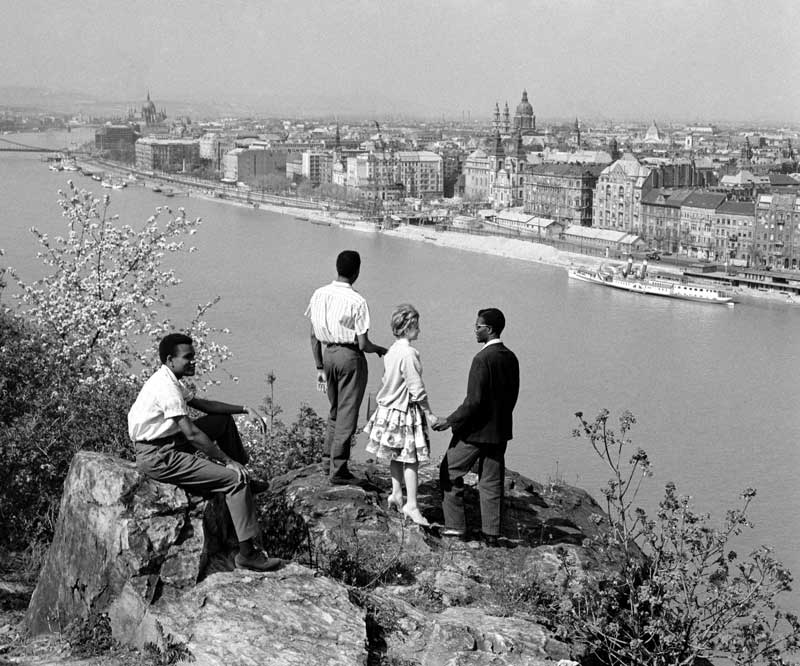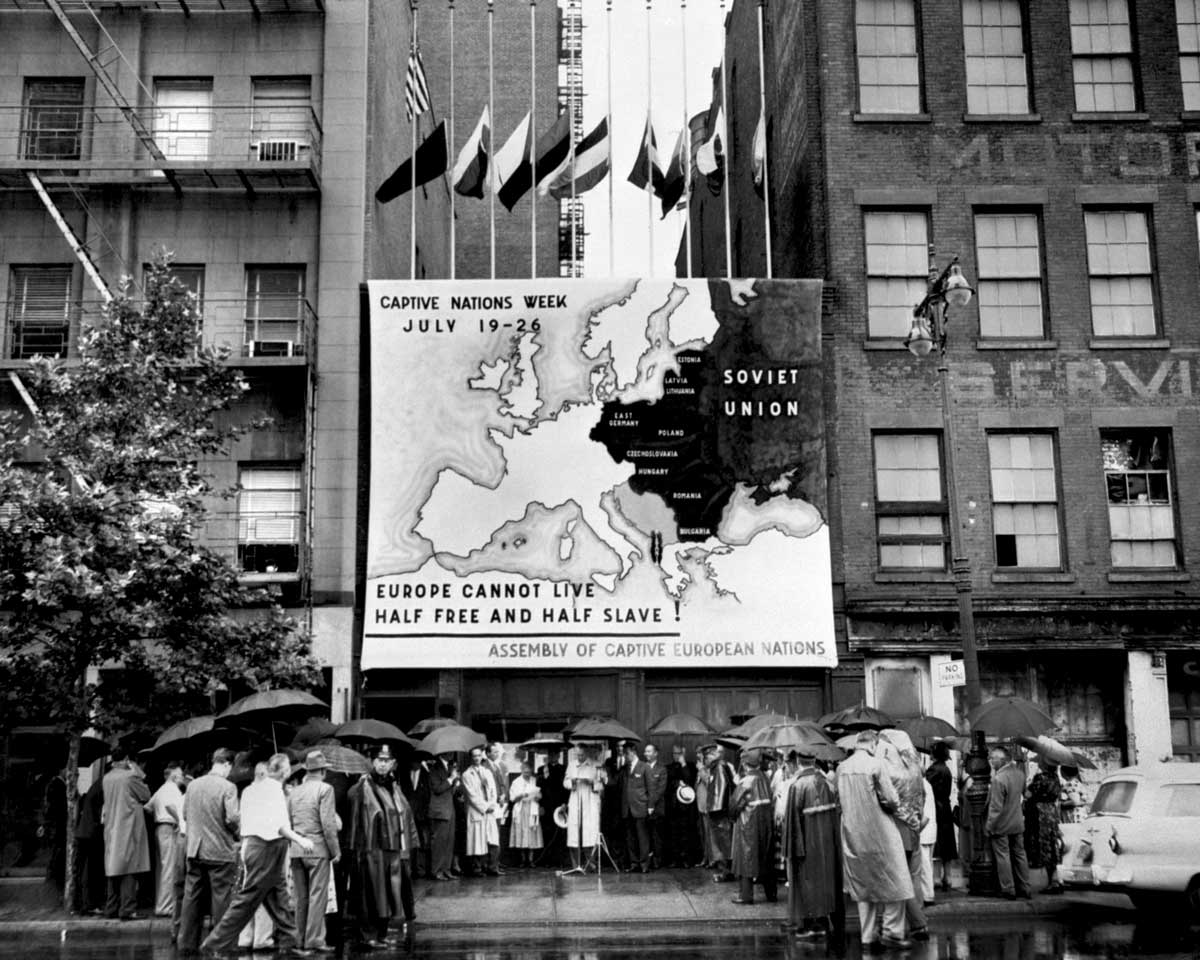 Mónica de Miranda, Red Horizon, 2020, film still
Mónica de Miranda, Red Horizon, 2020, film still
The exhibition at the Fészek Művészklub is open from May 13 to May 30, 2021.
Opening hours: Monday–Friday, 2 PM to 6 PM
The exhibition can be visited only with an immunity card. Maximum 6 people are allowed in the exhibition space at a time. Wearing a mask is mandatory.
As part of the exhibition, Naeem Mohaiemen's film Afsan's Long Day is on view at Living Room, at Lónyay Street 50, until 30 May 30.
Opening hours: Wednesday–Saturday, 3 PM to 7 PM: https://www.facebook.com/events/784997535781625
This website is updated with new content each week during OFF-Biennale, April 23 – May 30, 2021.
Venue: Fészek Művészklub, Galéria és Herman-terem, 1073 Budapest, Kertész u. 36. Venue is not wheelchair accesible.
A Fészek Művészklubban a kiállítás május 13. és május 30. között látogatható.
Nyitvatartás: hétfő–péntek, 14:00–18:00
A kiállítás csak oltási igazolvánnyal látogatható és egyszerre 6 fő tartózkodhat a kiállítótérben. Maszk viselése kötelező.
A kiállítás részeként Naeem Mohaiemen Afsan's Long Day című filmje a Nappali-ban, a Lónyay utca 50. szám alatt látható május 30-ig.
Nyitva tartás: szerda–szombat, 15.00–19.00: https://www.facebook.com/events/784997535781625
Ez a weboldal az OFF-Biennále ideje (2021. április 23 – május 30.) alatt minden héten új tartalommal frissül.
Helyszín: Fészek Művészklub, Galéria és Herman-terem, 1073 Budapest, Kertész u. 36. Kerekesszékkel nem megközelíthető.
Transperiphery Movement
Global Eastern Europe and Global South
Can Hungarian settlers in Latin America, Cuban migrant workers in Hungary, and Afro-Asian students in Eastern Europe have a common history? Is there a shared colonial history of Eastern Europe and the Global South? The exhibition looks at the historical relationships and parallels between the global periphery (Global South) and semiperiphery (Eastern Europe) in the 20th century through the concepts of coloniality, peripherality, and migration.
How did people in these regions, seemingly divided by various differences, perceive, interact with, and shape each other? The exhibition puts forth a global and multi-focal perspective that not only demonstrates the importance of unearthing the now forgotten relations between Eastern Europe and the Global South, but also probes what these relations meant from the perspective of the Global South.
The exhibition combines archival materials and personal memories with historical and contemporary art, including newly commissioned artworks. Its critical question is how to de-center the history dominated by the global center from the perspective of the global peripheries and by re-centering peripheral positions.
The Transperiphery Movement seeks to counter the center-dominated, hierarchical view of history by re-telling the histories of resistance strategies and emancipative possibilities of interperipherality. Visitors may embark on this transperipheral travel at the exhibition, which seeks to explore the shared, transnational history of Eastern Europe and the Global South.
Transzperiféria Mozgalom
Globális Kelet-Európa és Globális Dél
Lehet-e közös történelme a dél-amerikai magyar telepeseknek, a Magyarországon dolgozó kubai vendégmunkásoknak és a Kelet-Európában tanuló afro-ázsiai diákoknak? Beszélhetünk-e Kelet-Európa és a Globális Dél közös gyarmati történelméről? A kiállítás a gyarmatiság, a periférikus pozíció és a migráció fogalmain keresztül ragadja meg a globális periféria (Globális Dél) és félperiféria (Kelet-Európa) történeti kapcsolatait és párhuzamait a 20. században.
Hogyan látták és formálták egymást, miként érintkeztek a két régióból származó emberek, akiket számtalan különbség határolt el? A kiállítás több nézőpontból és globális szemléletmódban vizsgálja ezeket a kérdéseket. Megvilágítja, hogy ma Kelet-Európában miért fontos a Globális Déllel folytatott kapcsolatok feltárása, és hogy ezek a kapcsolatok mit jelentenek a Globális Dél szemszögéből.
A kiállítás archív anyagokat, személyes visszaemlékezéseket, illetve történeti, kortárs és erre az alkalomra készülő művészeti munkákat mutat be. Azt kutatja, hogy a centrumországokból írt történelem hogyan kérdőjelezhető meg vagy fordítható ki a perifériák nézőpontjából, a periferizált helyzetek középpontba állításával.
A Transzperiféria Mozgalom célja, hogy a centrummal szembeni ellenállás stratégiáit és a perifériák közti kapcsolatok történelmét szembeállítsa a globális centrum által uralt, hierarchikus történelemképpel. A látogatók ebben a transzperifériás utazásban követhetik végig Kelet-Európa és a Globális Dél közös transznacionális történelmét.
Curators: Eszter Szakács, Zoltán Ginelli
Participating artists: Clemente Padín; György Galántai; Katrin Winkler; Manthia Diawara; Mónica de Miranda; Naeem Mohaiemen; Judit Flóra Schuller
Participating researchers: Zoltán Ginelli, Zsuzsa László, Bartosz Nowicki, Łukasz Stanek, Tereza Stejskalová, Eszter Szakács, Bálint Tolmár
Exhibition design: Katarina Šević
Assistant curator: Judit Árva
Video interview: Virág Tyekvicska
Text editing assistant: Borbála Szakács
Image editing: Melinda Bacsa
Partners: ACAX – Agency for Contemporary Art Exchange; Artpool Art Research Center; Socialism Goes Global: Cold War Connections Between the 'Second' and 'Third Worlds' 1945–1991 (University of Exeter), Fészek Artclub
Supported by Goethe-Institut and Instituto Camões, Aalto University School of Arts, Design and Architecture
Special thanks: Kati Simon
The project was commissioned by OFF-Biennale Budapest 2021.
Exhibition design: Katarina Šević
Assistant curator: Judit Árva
Video interview: Virág Tyekvicska
Text editing assistant: Borbála Szakács
Image editing: Melinda Bacsa
Partners: ACAX – Agency for Contemporary Art Exchange; Artpool Art Research Center; Socialism Goes Global: Cold War Connections Between the 'Second' and 'Third Worlds' 1945–1991 (University of Exeter), Fészek Artclub
Supported by Goethe-Institut and Instituto Camões, Aalto University School of Arts, Design and Architecture
Special thanks: Kati Simon
The project was commissioned by OFF-Biennale Budapest 2021.
Kurátorok: Szakács Eszter, Ginelli Zoltán
Részt vevő művészek: Clemente Padín; Galántai György; Katrin Winkler ; Manthia Diawara; Mónica de Miranda; Naeem Mohaiemen; Schuller Judit Flóra
Részt vevő kutatók: Ginelli Zoltán, László Zsuzsa, Bartosz Nowicki, Łukasz Stanek, Tereza Stejskalová, Szakács Eszter, Tolmár Bálint
Kiállításdesign: Katarina Šević
Kurátorasszisztens: Árva Judit
Videóinterjú: Tyekvicska Virág
Szövegszerkesztési asszisztens: Szakács Borbála
Képszerkesztés: Bacsa Melinda
Partnerek: ACAX – Agency for Contemporary Art Exchange; Artpool Művészetkutató Központ; Socialism Goes Global: Cold War Connections Between the 'Second' and 'Third Worlds' 1945–1991 (University of Exeter), Fészek Művészklub
Támogató: Goethe Intézet, Camoes Intézet, Aalto University School of Arts, Design and Architecture
Külön köszönet: Simon Kati
A projekt az OFF-Biennále Budapest 2021 keretében jött létre.

















